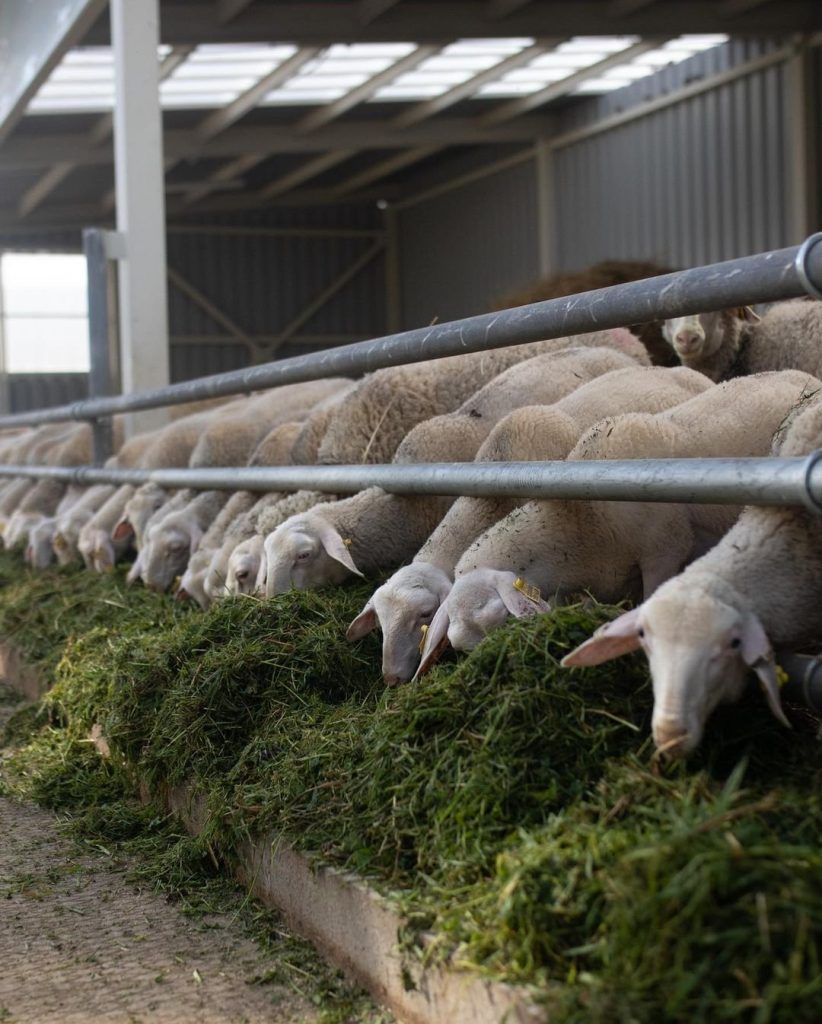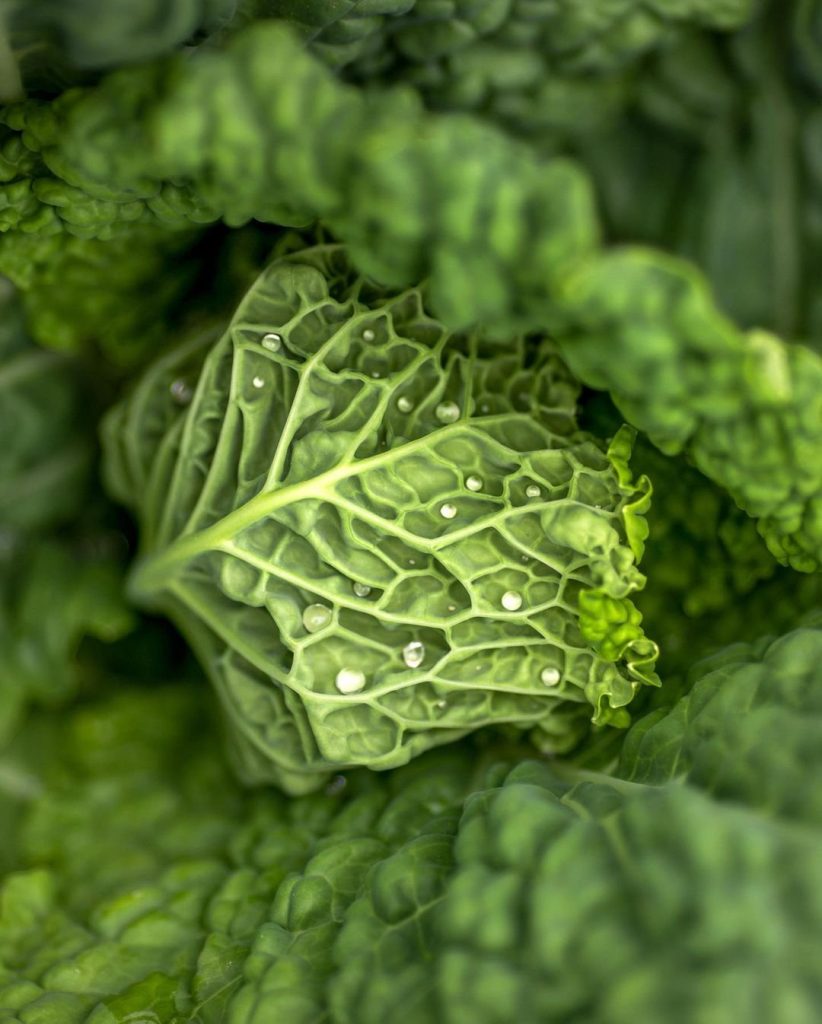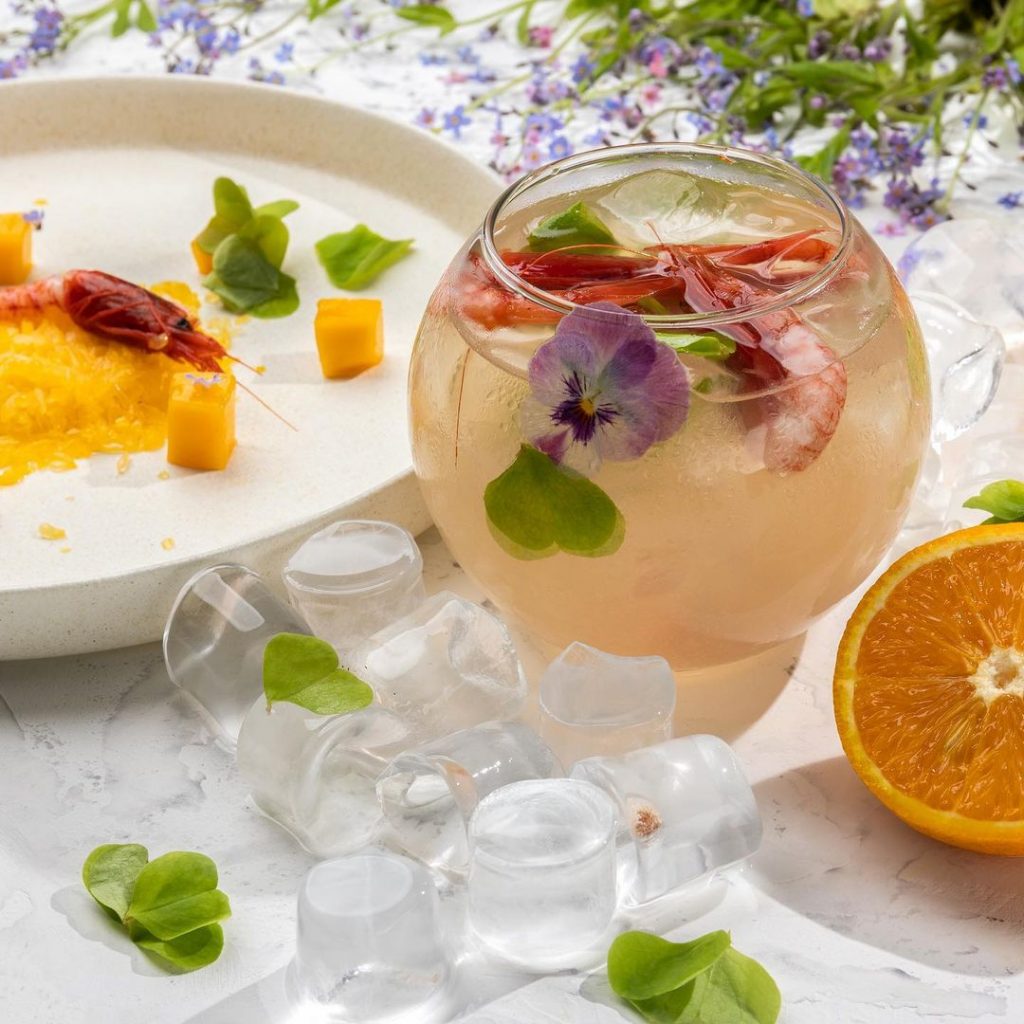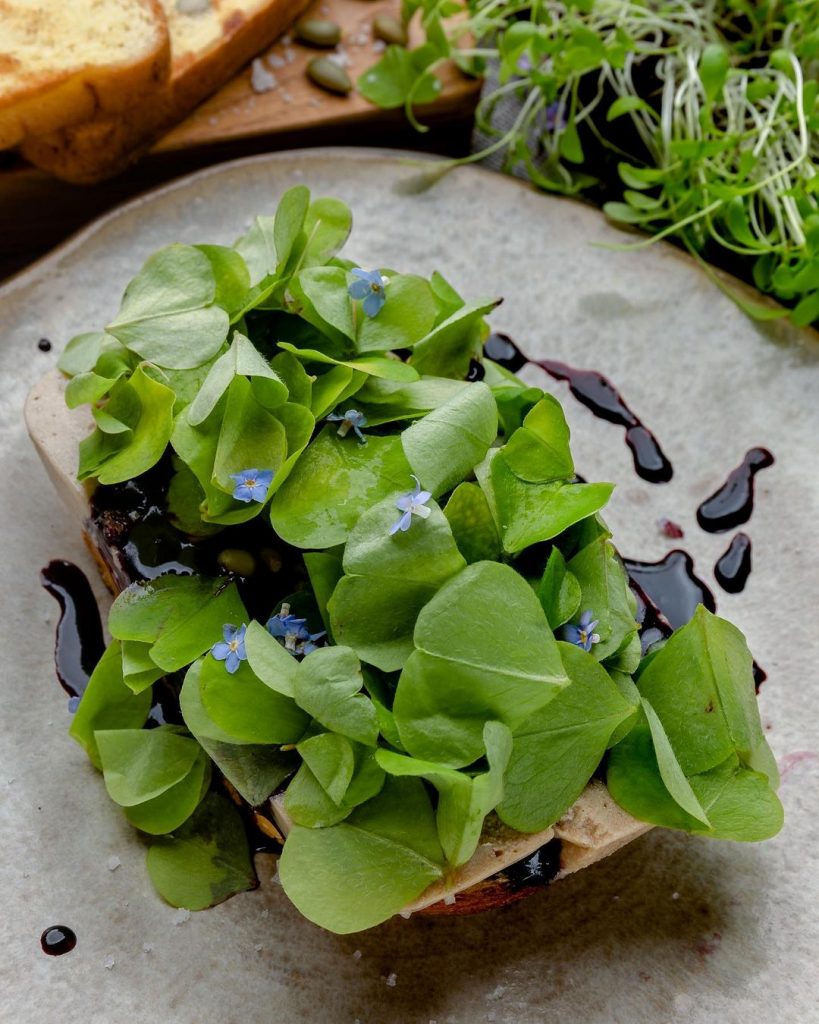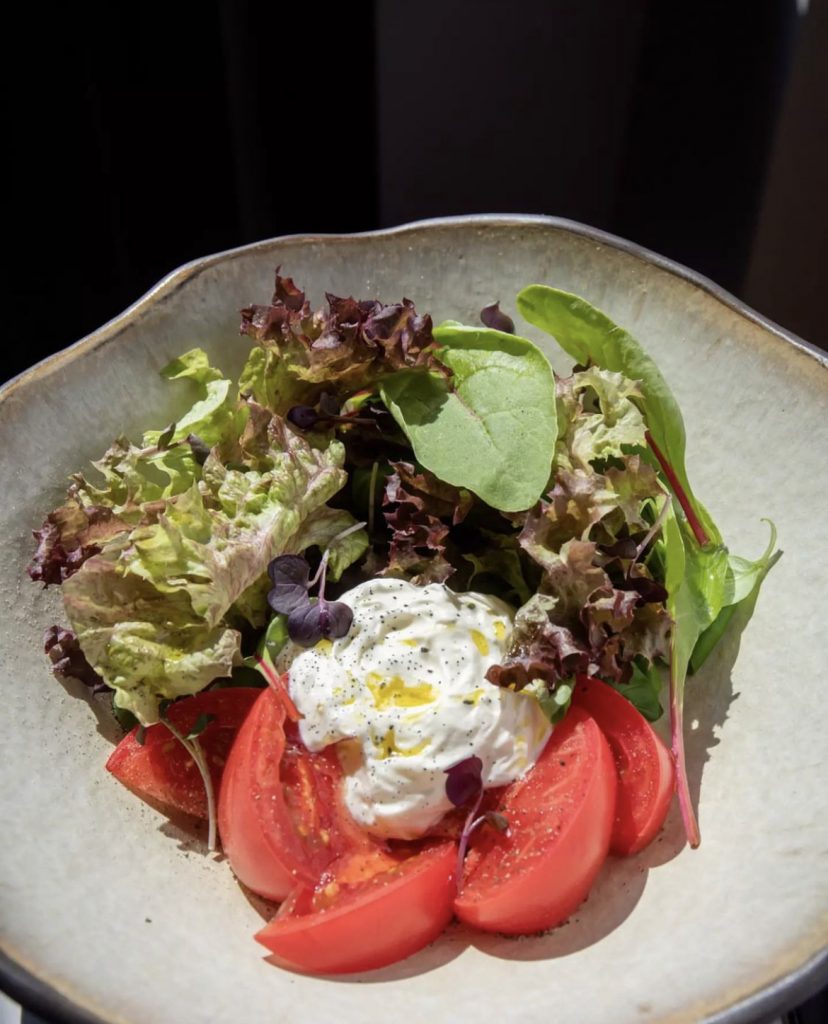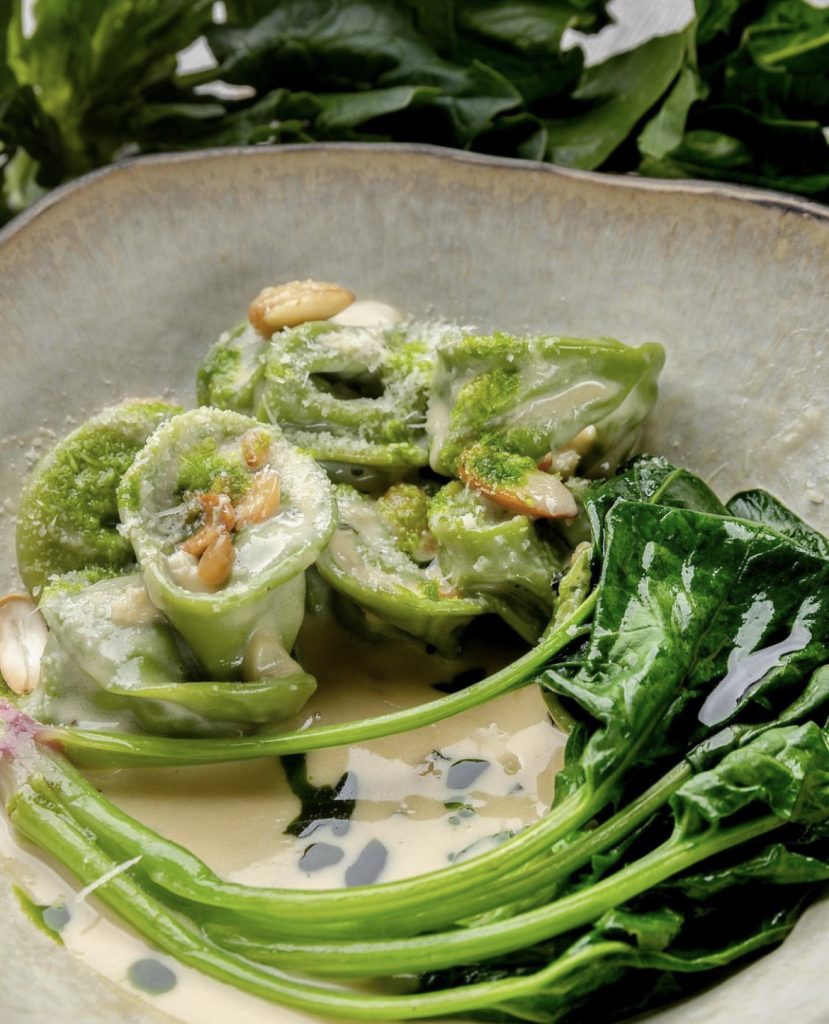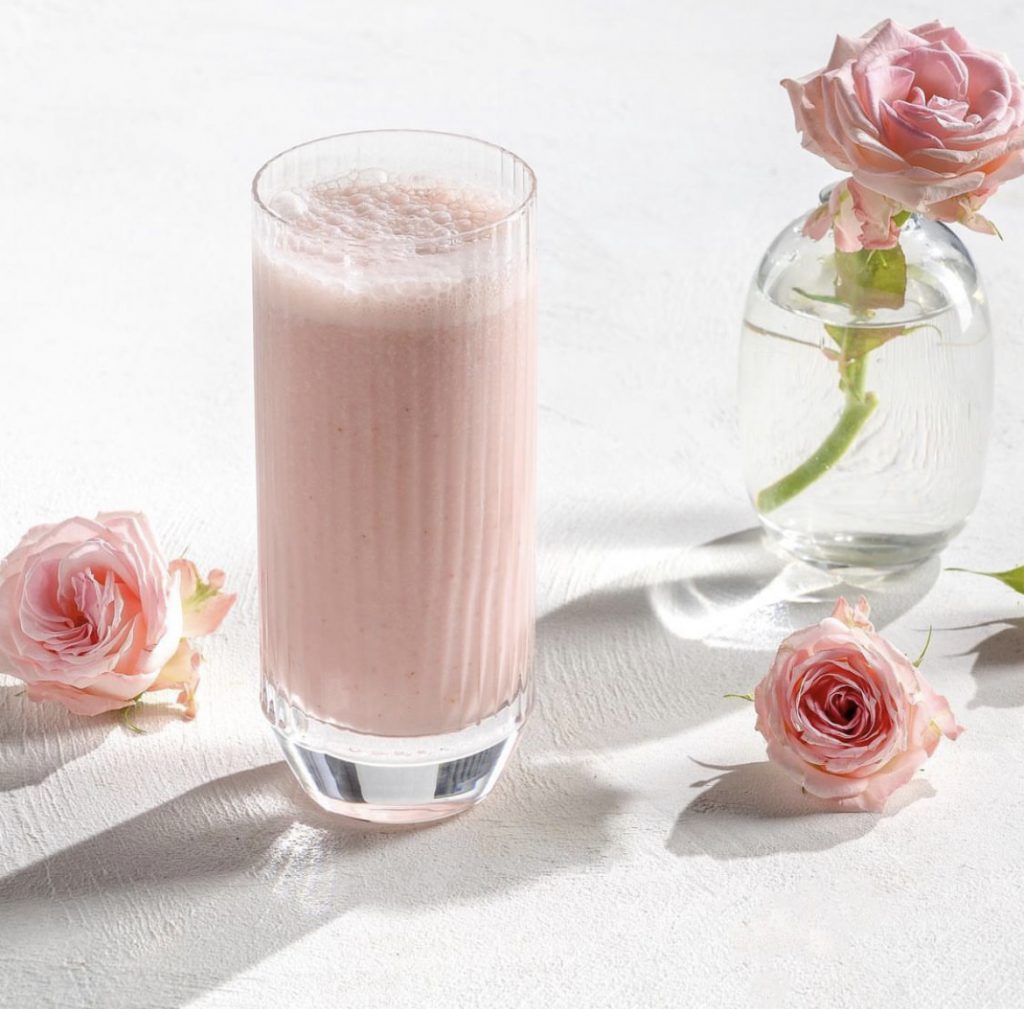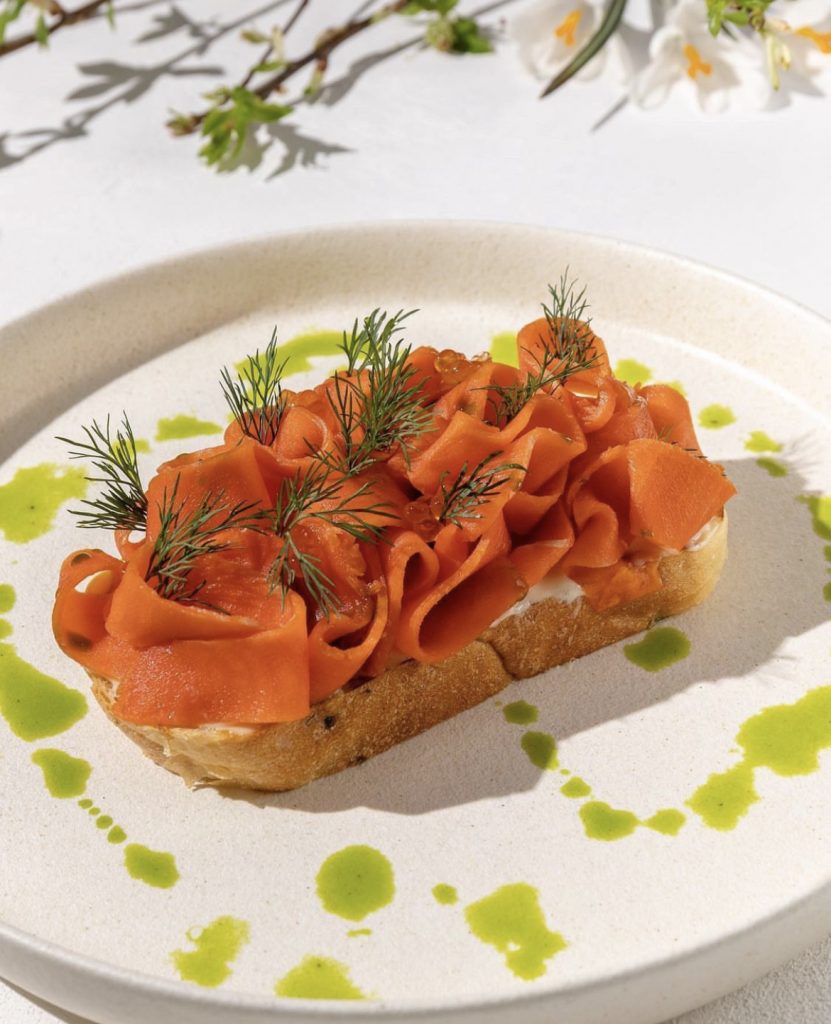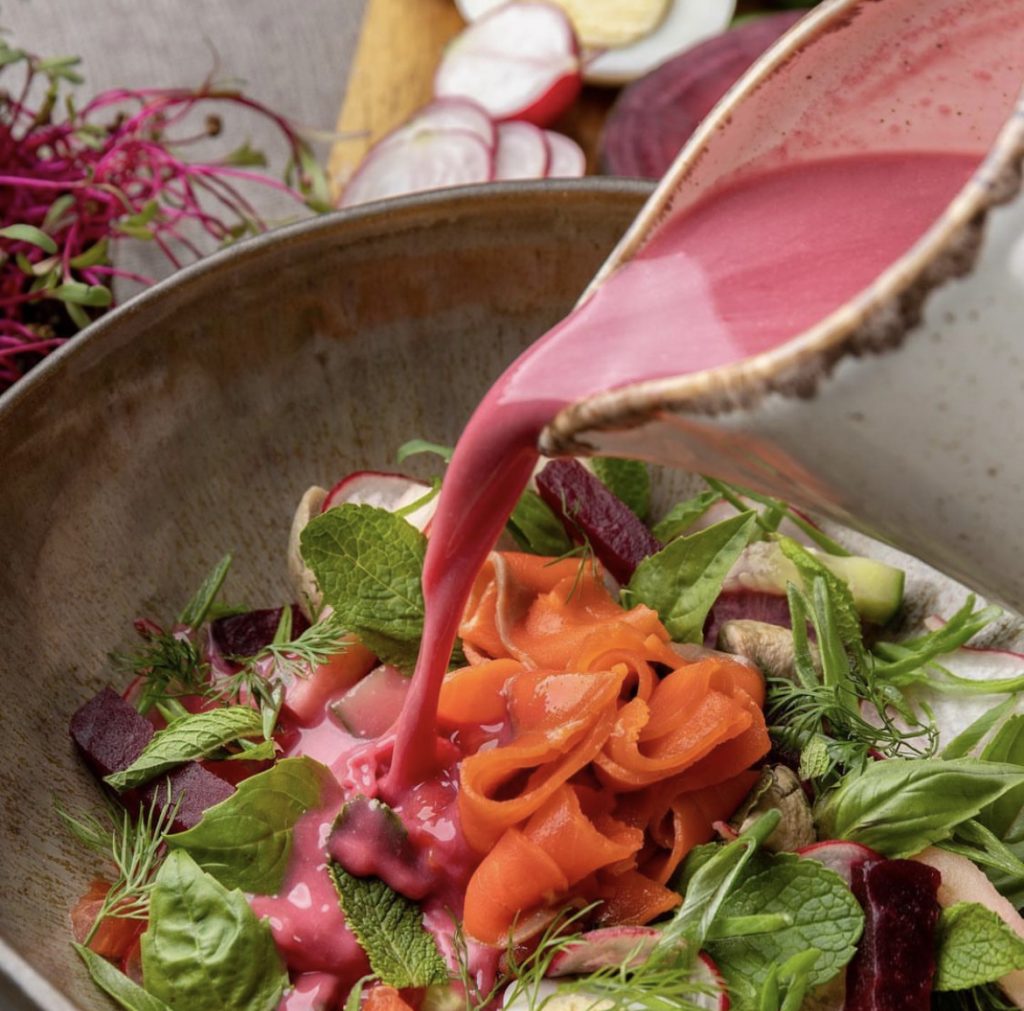When it comes to organic food, there are more questions than answers. And often the interlocutor pronounces this phrase with such confidence and pathos that the language does not turn to ask what it means, why is it more useful and why so expensive?
The Fashion Vibes columnist Anya Baturina asked all these questions to the chef of M2 Organic restaurant Anton Magdyuk. And he apparently did not even look stupid, or he turned out to be a very good-natured person and did not show it.

Anya Baturina, columnist for The Fashion Vibes, author of the Gastrology Telegram channel
Organic food – what are you?
Boring and, in short, organic products are products that are produced without the use of pesticides, chemical and mineral fertilizers. But you can also read it on Wikipedia. Anton Magdyuk explained in simple terms what kind of organic matter he prepares and how it grows.

“Everything from organic stew to jam, compote, beer, wine can be called organic (if grown or produced under certain conditions and passed certification), to vegetables, even animals, even alcohol and its derivatives. Even french fries can be organic if you fry them in organic oil that you harvest from an organic seed in organic farms.
Organic rosette means that no chemical fertilizers were used in the production and cultivation of the crop, and if a cow cake is sprinkled with tomatoes (from an organic cow, of course), this is quite normal.
Here, for example, you need to have an organic seed (raw, live, wild) in order to obtain an organic sunflower and the oil that will pass the certificate from it. In accredited clean land that has not been used for more than five years, it will turn into sunflowers. Of course, you should be prepared for the fact that the result will be more modest than taking a thick oilseed and planting it in fertilizer. In the latter case, you will get such a harvest of oil not once, but four times a season, especially if you add growth accelerators!
And our seed, which swelled, was pushed, rose from its knees twice, listened to Basta (this is the maximum fertilizer you can get), and after that stood up and got stronger, this fat sunflower will beat this fat sunflower. a fair fight, but of course there will be less harvest than that. It will be more muscular, there will be less “raw material” we can use, it will be more robust, but it will have a lot more flavor and aroma.
I have described a short route because to obtain organic meat you have to go through even more stages and meet even more requirements. The main rule of organics: the growth of the product should occur naturally, and the conditions created for it should not harm the environment. You can’t just grow sunflowers in a field for 30 years in a row, otherwise the soil will run out.”
What about in winter?
If everything is approximately clear about what is grown in the spring, what is grown in the summer and what is harvested in the fall, then winter organic matter raises many questions. Is it really necessary to give up vegetables or is organic food only possible three or four months a year?
“Everything we prepare now (in autumn) should feed us all winter. These include salting, drying, sublimation, preservation, fermentation, freezing, etc. Yes, for example, restaurants have to use Uzbek tomatoes in the winter, but this season at M2 Organic we will try to steer clear of some straightforward summer dishes like tomato burrata. Technology is advancing, so many have their own microgreens all year round. I will carefully study our winter dishes, minimizing non-seasonal produce.
I will not say that in winter the menu should be less, it just needs to be radically different. If in the summer we saturate ourselves with crispy herbs, apples, apricots, peaches, then in winter, in principle, it is normal for the body to switch to olive oil, something with a wonderful fatty sauce with canned oranges. Do not forget about meat, dairy and poultry – these are organic products available all year round. By the way, in addition to what we grow on our M2 farm, we also use seafood in the restaurant. For example, wild-grown fish (not aquaculture) that we know exactly where it came from.
We have men in the forest collecting various wild plants. We are now testing linden bud artichokes, which are very similar in aroma and taste but smaller.”
Organic, bio, eco – who to trust?
There are several terms for organic origin. For example, in Sweden they use the prefix “eco”, in Germany – “bio”, in the USA and Great Britain – “organic”. In Russia, you can find all three products in the store, but do not be fooled by this provocation.
The most important thing to look for on the packaging is the Eurolist badge. It is very difficult to get it, but if it is, then the product is as “pure” as possible. Approximately as in ancient times, people did not have time to degrade the environment.
In order to obtain this certificate, the minimum amount of organic components in the composition of the product is 95%. If products contain at least 70% organic ingredients, they are awarded the Made with Organic badge. If it is below 70%, manufacturers have the right to list them only in the composition. However, the prefixes “bio” and “eco” are not specially regulated in our country and may be misleading.
If you want to know exactly about the use of pesticides, hormones, growth enhancers, antibiotics, and others, look for the badges on the back confirming the certification, not the name or brand when choosing a product on the store shelf. .
Why is it so expensive?
Think about it, to grow an organic produce you can’t cheat and use any stabilizer that can help protect it if something goes wrong. The business is complex, the risks are high, and all this affects pricing.
“If we use fertilizers, we spend 5% of the future crop on them and we collect 100 tons of grass from one field, say three times a summer. Otherwise, we use nothing and harvest only 70 tons of greens per season. It seems that the area is the same, the labor costs are the same, and the product is less. All fertilizers, GMOs and growth hormones are made to lower the cost of the product.
Growing a crop naturally is very valuable: There is a small crop and a very high risk of its death. So your cow gets sick, you quarantine it but you can’t cure it, except maybe add a banana. Everything gets a lot easier if you don’t act like an organic farm – as soon as something goes wrong you threw in manure, pierced the cow with a syringe and that’s it.
And what’s the benefit?
Let’s trust the scientists who take the time to compare organic tomatoes with tomatoes you can buy at the supermarket. Some of these studies show that organically grown foods contain more vitamins, minerals and antioxidants than conventional foods. These components are beneficial for the body, help it maintain its protective functions and even have an anti-aging effect. Of course, this is a big plus in favor of farms. True, you should not put everything on one card and hope that by eating just a few organic apples, you will radically change your life.
It is also important not to spoil everything yourself – to store it correctly (not for too long, because natural spoilage is faster than to fill with chemicals), it is useful to cook (steam, grill and not greasy, harmful oil) and eat. timely organic purchases.
How to love organic food?
Many have already realized that eating “clean” foods is good for health and well-being. These are gradually being used because of their high cost, but there are also those who need glutamate, oil and GMOs.
“Organic is the flavor of childhood. Those who grew up in the village and remember those flavors automatically settle in the village. In fact, if you set the same conditions – same price, same volume, then 90% of people will choose organic. Even those who don’t fully understand what’s going on.
Organics taste different. Constantly “powder”, glutamate, etc. When you eat it, your receptors get used to the insane power of the impact on them. But the cleaner the receptors, the brighter you will feel the taste. And if I try doshirak now, my buyers will go crazy, I will feel a lot of used additives and mixtures, I will feel E, E and E.
Organics take some getting used to. You may need to add more seasonings at first, but within a week or two your receivers will gradually clear. After about a few weeks, you will notice changes in your appearance – the skin will become better, the face will become “cleaner”, a kind of food allergy may disappear.
Less toxins accumulate in the body than from organic food. Here’s an example: you eat 200g of meat – organic and not. The body will have a lot of energy when it processes 200 g of “clean” meat. But when half the toxins go into the same amount of “stuffed” meat as only half the meat, the body will have half the energy (and spend another bit processing that scum).
food future
Seedlings growing on the windowsill are back in fashion. Talking about who the “harvest” rose on the balcony can be heard almost more often than the discussion of the weather. Some go even further and flaunt the title of “microfarmers” by growing more of their land than they can eat. So far, it cannot be called “the future”, but the trend is interesting.
“Agriculture is thriving and that’s great. At least all summer residents in the world can engage in farming, the more there are, the more competition. Those who find themselves in the market as a result of sufficient competition will have to bring their products to a reasonable level of quality, otherwise they will not survive. Well, if they fail, they’ll have to accept that it’s just a hobby and eat whatever they’ve grown themselves.
I hope we will come to a kind of European style of farming, with small farms producing a limited number of crops, each specializing in their own field.
Source: People Talk



